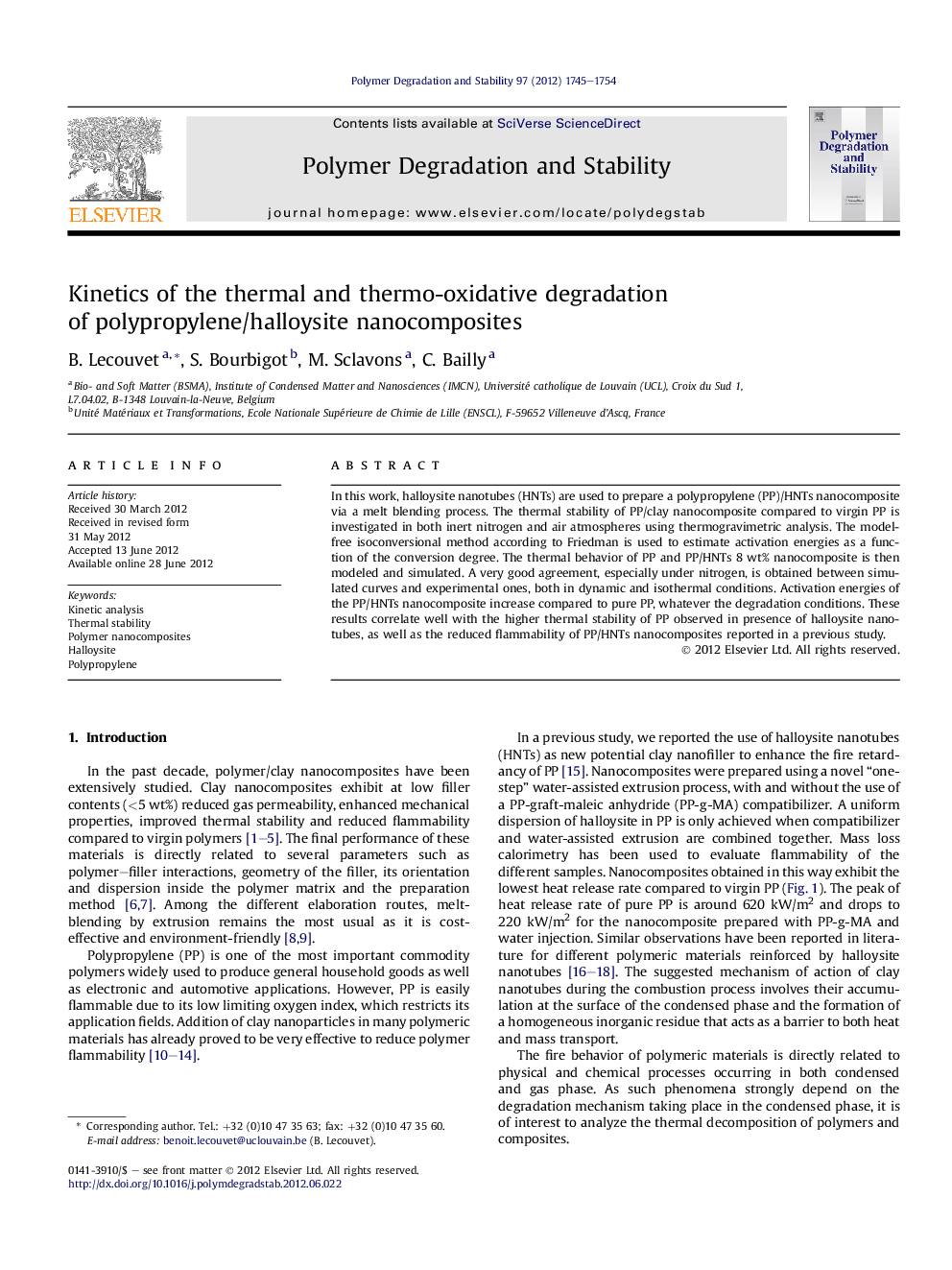| Article ID | Journal | Published Year | Pages | File Type |
|---|---|---|---|---|
| 5202745 | Polymer Degradation and Stability | 2012 | 10 Pages |
Abstract
In this work, halloysite nanotubes (HNTs) are used to prepare a polypropylene (PP)/HNTs nanocomposite via a melt blending process. The thermal stability of PP/clay nanocomposite compared to virgin PP is investigated in both inert nitrogen and air atmospheres using thermogravimetric analysis. The model-free isoconversional method according to Friedman is used to estimate activation energies as a function of the conversion degree. The thermal behavior of PP and PP/HNTs 8Â wt% nanocomposite is then modeled and simulated. A very good agreement, especially under nitrogen, is obtained between simulated curves and experimental ones, both in dynamic and isothermal conditions. Activation energies of the PP/HNTs nanocomposite increase compared to pure PP, whatever the degradation conditions. These results correlate well with the higher thermal stability of PP observed in presence of halloysite nanotubes, as well as the reduced flammability of PP/HNTs nanocomposites reported in a previous study.
Related Topics
Physical Sciences and Engineering
Chemistry
Organic Chemistry
Authors
B. Lecouvet, S. Bourbigot, M. Sclavons, C. Bailly,
